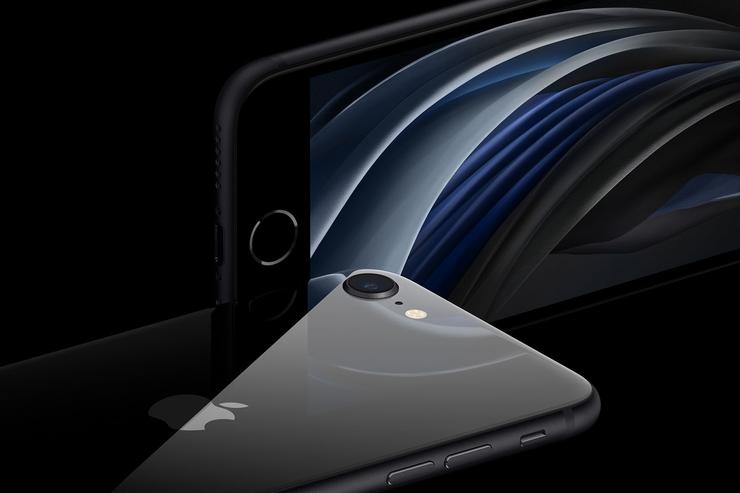
Motorola G8 Plus (2019) review: Insignificant Upgrade
Pros
- Slick design
- Clean software
- Good battery life
Cons
- Uneven camera system
- Mediocre performance
Bottom Line
The Moto G8 Plus is great in all the ways that modern Motorola phones are but doesn’t really move the needle towards a place where they can readily compete with the increased competition in this particular price-segment.
-
Price
$ 499.00 (AUD)
Should I buy the Motorola Moto G8 Plus (2019)?
How much do you care about the camera on your phone? Because, ultimately, the only meaningful difference between the Moto G8 Plus and Moto G7 Plus that launched earlier is the triple-lens camera on the back.
Of course, if you really care about your camera, you’re still probably going to be better served by the Pixel 3a. However, if you’re looking for a $499 smartphone, the Moto G8 Plus makes a strong case for itself as the well-rounded and cohesive alternative for after a pretty good camera and a slightly larger screen.
It’s rarely exceptional but it rarely lets you down.
Price when reviewed
In Australia, the Moto G8 Plus is priced at an RRP of AU$499.
Motorola Moto G8 Plus (2019) full review
The Moto G8 Plus brings with it several key design changes but, for the most part, it comes across as a minor update on the look and feel of the previous G7 Plus.
On the front, there’s a 6.3-inch FHD LCD display with a teardrop notch. On the back, there’s a fingerprint sensor. Then, the speaker grill at the top-edge of the G8 Plus is matched by one on the bottom edge. This sits alongside a 3.5mm headphone jack and a USB Type-C port that’s used for charging and data transfers.
Though the display is slightly larger than that of the G7 Plus, the overall physical footprint of the G8 Plus doesn’t come across as all that different. It still feels nicer in hand than most mid-range phones do, even if it doesn’t approach the luxe feel-factor of something like the iPhone 11 Pro.
The G8 Plus abandons to center-mounted camera setup of its predecessors and embraces the precedent set by the recent Moto One Vision. Sitting on the shoulder of the modest mid-ranger, you’ve got a 48-megapixel primary "quad-pixel" lens, a 16-megapixel "action" lens and a 5-megapixel depth sensor. There's also a 25-megapixel selfie camera.
 Credit: Motorola
Credit: Motorola Despite the addition of an additional ultrawide-angle lens here, I have to admit I struggled to find much difference between the quality of photos that the Moto G8 Plus was able to regularly produce and what the Motorola One Vision could do. The camera app was certainly more responsive but the end results didn’t do much to distinguish themselves.
Like the Motorola G7 Plus before it, the G8 Plus runs on a mostly clean version of Android 9.0 with the usual motley crew of Motorola-branded features like gyro-powered gesture controls. Wireless charging remains out of reach for mid-tier shoppers here but the Moto G8 Plus does support fast 15W wired charging via USB Type-C.
If you really care about your camera, you’re still probably going to be better served by the Pixel 3a. However, if you’re looking for a $499 smartphone, the Moto G8 Plus makes a strong case for itself as a well-rounded and cohesive way to go. It’s rarely exceptional but it’s not going to let you down anytime soon either.
Price
In Australia, the Moto G8 Plus will be available from AU$499 through the Motorola Store, Officeworks, The Good Guys and MobileCiti. You can buy it through:
The Moto G8 Plus is not available on any postpaid plans but you can pair it with a SIM-only plan. Check below for a round-up of the best SIM only plans:
Design - Look, Feel, Features and Camera
When it comes to form-factor, the Moto G8 Plus brings with it several key design changes but still comes across as a minor update on the look and feel of the previous G7 Plus - which launched only a few months ago.
On the front, there’s a 6.3-inch FHD LCD display with a teardrop notch. Though the display is slightly larger than that of the G7 Plus, the overall physical footprint of the G8 Plus doesn’t come across as all that different. It still feels nicer in hand than most mid-range phones do, even if it doesn’t approach the luxe feel-factor of something like the iPhone 11 Pro.
That might sound a little dismissive but, credit where it’s due, Motorola have a great track record for making cheap phones that feel anything but and the Moto G8 Plus continues that tradition.
Like the Moto G7 Plus, there’s a fingerprint sensor on the back of the device, Meanwhile, the speaker grill at the top-end matched by one on the bottom edge alongside a 3.5mm headphone jack and a USB Type-C port that’s used for charging and data transfers.
 Credit: Motorola
Credit: Motorola Of course, the reverse-side of the Moto G8 Plus is the most visually-effective difference between it and its predecessor. To begin with, the G8 Plus abandons to center-mounted camera setup of its predecessor and embraces the prettier aesthetic precedent set by the recent Moto One Vision. Then, sitting on the shoulder of the modest mid-ranger, you’ve got a a 48-megapixel primary "quad-pixel" lens, a 16-megapixel "action" lens and a 5-megapixel depth sensor. There's also a 25-megapixel selfie camera.
 Credit: Fergus Halliday | IDG
Credit: Fergus Halliday | IDG There’s a sharpness to the detail and crispness to the colors here that really comes through in the results produced by the G8 Plus’ camera kit. I found it particularly good for food photos.
 Credit: Fergus Halliday | IDG
Credit: Fergus Halliday | IDG  Credit: Fergus Halliday | IDG
Credit: Fergus Halliday | IDG Outdoor shots also looked nice but were often a little off when it came to exposure and contrast. Results in low-light situations were a little more uneven. There’s a dedicated night vision mode but results using it didn’t have the pop or fidelity you’d find out of a similar feature on a Huawei, Google or Apple device. Likewise, there's a significant degradation in quality once you start to play with zoom - so you have to get pretty close to your subject to get the best results.
 Credit: Fergus Halliday | IDG
Credit: Fergus Halliday | IDG Despite the addition of an additional ultrawide-angle lens here, I have to admit I struggled to find much a difference between the quality of photos that the Moto G8 Plus was able to regularly produce and what the Motorola One Vision could do. The camera app was certainly more responsive but the end results didn’t do much to distinguish themselves.
 Credit: Fergus Halliday | IDG
Credit: Fergus Halliday | IDG Performance - Specs, Software, Benchmarks and Battery Life
Specs
Processor: Snapdragon 665
Operating System: Android 9.1
RAM: 4GB
Storage: 64GB
MicroSD slot: Yes
Headphone Jack: Yes
Fingerprint sensor: Yes
SIM: Dual
Battery: 4000mAh battery
Connectivity: Wi-Fi, NFC, Bluetooth 5, 4G
Rear Camera: 48-megapixel (f/1.7) + 16-megapixel (f/2.2) + 5-megapixel (f/2.2) depth sensor
Front-Facing Camera: 25-megapixel (f/2.0)
Dimensions: 158.4 x 75.8 x 9.1 mm
Weight: 188 g
Software
In terms of software, there’s not much to write home about here. Like the Motorola G7 Plus before it, the G8 Plus runs on a mostly clean version of Android 9.0 with the usual motley crew of Motorola-branded features like gyro-powered gesture controls. These can be easily disabled if they’re not your thing but they’re easy enough to live with.
All the above being said, it is very frustrating to see the Motorola G8 Plus launch without Android 10 out of the box. In a world where that was the case, it’d be much easier to recommend. Motorola are usually pretty good about these things but there’s no word yet on when that upgrade will happen.
Benchmarks
When it comes to benchmarks, the Moto G8 Plus lagged behind both the RealMe XT - which matches Motorola’s $499 price-tag - and the RealMe 5, which undercuts it by about $200.
 Credit: Fergus Halliday | IDG
Credit: Fergus Halliday | IDG Even if the experience of using the Moto G8 Plus was smooth and responsive, that’s pretty disappointing to see. Particularly, if you were hoping to get much gaming done on this thing.
PCMark Work 2.0: 6518
3DMark Sling Shot Extreme OpenGL ES 3.1: 1121
3DMark Sling Shot Extreme Vulcan: 1034
Geekbench: 313 single-core, 1367 multi-core
Geekbench Compute: 369
Battery Life
In terms of reliability, the Moto G8 didn’t deviate much from what the Moto G7 Plus offered. Fortunately, that meant I could comfortably go two-days of regular usage on a single charge. The Moto G8 Plus isn’t going to hit the heights of something like the Galaxy Note 10 for power users but it is going to last a long time.
Wireless charging remains out of reach for mid-tier shoppers here but the Moto G8 Plus does support fast 15W wired charging via USB Type-C.
The Bottom Line
Though it’s less of a significant upgrade than it might first appear to be, the Moto G8 Plus still more-or-less makes its predecessor obsolete in a big way. All the familiar strengths you’d expect are present and accounted for with a more-likable design and a more flexible camera system rounding out the package nicely.
If you really care about that camera, you’re still probably going to be better served by the Pixel 3a. However, if you’re looking for a $499 smartphone, the Moto G8 Plus makes a strong case for itself as a well-rounded way to go.
The Moto G8 Plus is decent in all the ways that modern Motorola phones are but doesn’t really move the needle towards a place where they can readily compete with the increased competition in this particular price-segment. It's a step up from what came before it but a small one at that.
 Credit: Motorola
Credit: Motorola Brand Post

Most Popular Reviews
- 1 Dell U3223QE review: A winning debut for an IPS Black monitor
- 2 HP Spectre x360 16 review: The right 2-in-1 at the wrong time
- 3 Acer K242HYL review: An affordable monitor for any occasion
- 4 GeForce Now review: You bring the games, Nvidia streams the hardware
- 5 Asus ProArt PA279CV monitor review: The go-to for content creators on a budget
Latest News Articles
- Bizarre iOS bug swaps out Spotify for Apple Music in the iPhone dock
- Fortnite returns to the iPhone (sort of) courtesy Xbox Cloud Gaming
- Want to go watch the WWDC keynote at Apple Park? Here’s how to apply
- iPad buying guide 2022
- Apple to support ‘passwordless’ iPhone logins on Android phones and PCs
Resources
Macworld
What's new, plus best mac-related tips
and tricks

Business Centre
The latest business news, reviews, features and whitepapers

Videos
Watch our video news and reviews from around the world

Guides
Comprehensive buying guides, features, and step-by-step articles

PCW Evaluation Team
Pedro Peixoto
Aruba Instant On AP11D

Set up is effortless.
Cate Bacon
Aruba Instant On AP11D

The strength of the Aruba Instant On AP11D is that the design and feature set support the modern, flexible, and mobile way of working.
Dr Prabigya Shiwakoti
Aruba Instant On AP11D

Aruba backs the AP11D up with a two-year warranty and 24/7 phone support.
Tom Pope
Dynabook Portégé X30L-G

Ultimately this laptop has achieved everything I would hope for in a laptop for work, while fitting that into a form factor and weight that is remarkable.
Tom Sellers
MSI P65

This smart laptop was enjoyable to use and great to work on – creating content was super simple.
Lolita Wang
MSI GT76

It really doesn’t get more “gaming laptop” than this.
Featured Content
- Which Lenovo Laptop Should I Buy?
- Every TV in Samsung's 2022 line-up: OLED, Neo QLED and more!
- Top 10 best Android and Apple phones for under $600
- Everything you need to know about Smart TVs
- What's the difference between an Intel Core i3, i5 and i7?
- Laser vs. inkjet printers: which is better?









